The first group of Ps-4 locomotives was built by Schenectady Locomotive Works (part of American Locomotive Co.) in 1923 and numbered 1375-1386. These locomotives proved to be so popular that the Southern ordered another 15, and they filled vacant number slots between 1366 and 1392. In 1926, Richmond Locomotive Works (another part of Alco) built nos. 1393-1404. These machines differed from earlier models by having a 13,000-gallon tender. The last batch, nos. 1405-1409, was built by Baldwin.
The Ps-4 locomotives became the standard bearer for Southern passenger traffic between Washington and Atlanta, with a single locomotive operating for a 300-mile run before being relieved by another Ps-4. The only major variations for the class were nos. 1380, which was streamlined for use on the Tennessean, and 1409, which had a Coffin water heater installed as an experiment.
Throughout the late steam era, the Pacifics delivered superb service. When the class was retired, the Southern retained no. 1401 and later donated it to the Smithsonian Institution, where it remains on display.
The model
Make no mistake about it, this is a beautiful model.
The pilot packs great detail. For example, the casting shows the various points where the bars forming the “cowcatcher” are bolted onto the pilot. Also, the front deck, the steps beneath the headlight, and the running boards all have a safety tread pattern.
Just below the headlight is a red number board with the locomotive’s number and a left-facing crescent. At the top of the locomotive’s face is a bell that actually has a lanyard running back to the cab. A lanyard also connects the whistle to the cab.
Between the smokebox door and the smokestack, the feedwater heater rests like a crown. Painted in green, it contrasts with the gray of the smokebox. A spaghetti-like collection of green-painted pipes runs to and from the heater. Other add-on piping features red valve work.
The boiler’s tooling is superb. The cast-in details are clear and distinct, and you can see lots of bolts, seams, and latches. You’ll find access steps on the boiler in front of the cab, as well as steps below the walkway and hand grabs (no doubt to assist the O gauge maintenance workers who clean the windows).
The handrails running from the pilot along the length of the boiler nicely reflect the curve of the smokebox.
Painting and decoration are remarkable. As near as we could see, application and masking were perfect, with no overspray, underspray, or evidence of sloppy masking. I especially like the white accent stripe along the edge of the running boards. Also worth noting are the silver caps on the steam chests, the gold crescent and frame on the steam chests, and the gray of the smokebox.
The Tuscan-painted cab roof doesn’t have a sliding roof door; instead, it has a hinged hatch that opens and falls forward. The cab features two of MTH’s new crew figures, a small light bulb for illumination, and sliding side windows. The only negative is two large screws on the edge of the cab facing the tender.
The silver running gear is subdued, rather than bright. The various pipes and compressors between the running gear and the walkways along the boiler have first-rate cast-in detail. They also connect with the add-on piping above.
The die-cast metal tender is a massive model of the six-axle, 16-ton, 14,000-gallon-capacity prototype. The level of detail is excellent, with the cast-in bars that keep the coal-bin doors shut being among the deepest I’ve seen.
The coal load consists of individual chunks, and the tender’s paint job is just as sharp as the locomotive’s.
You’ll find add-on grab irons at the front of the tender as well as an add-on ladder on the rear. The rear end also features a backup light and twin markers. There is a movable, simulated uncoupler arm with a spot for a chain, but since the rear coupler is a coil coupler, I’m not sure how effective it is to tie the chain to the device.
The tender trucks are die-cast metal. Each truck corner is anchored to the frame by a simulated brake chain. The volume and smoke unit controls are on underside of the frame for running in conventional mode.
All things considered, the MTH Premier line Southern Ps-4 is a remarkable-looking locomotive. The designers at MTH have done an excellent job re-creating the locomotive in miniature.
On the test track
Performance of the Ps-4 was excellent. The locomotive was very responsive and smooth in all speed ranges.
The low-speed average was 6.6 scale mph, and the high-speed average was 77 scale mph. Drawbar pull for the 11-pound, 5-ounce locomotive was 2-pounds, 5-ounces.
The electronics package includes MTH’s ProtoSound 2.0 with its Digital Command System (DCS) circuitry.
The wide variety of the DCS system’s special features, such as Doppler sound effects and track clickety-clack, has yet to be topped.
The steamer has a deep, robust chuff and offers terrific compressor and at-rest sounds. The bell and whistle will draw attention even on a noisy railroad.
The fan-driven smoke unit delivered four-star performance at lower speeds, where you could clearly see smoke shooting up the stack on and off in sync with the chuffs of the sound system.
At higher speeds, the effect blends together into a stream of smoke and sound.
The MTH Ps-4 locomotive looks great, runs very well, and has a kick-you-know-what sound system.
If you’re a fan of the Southern, or terrific passenger paint schemes, put this locomotive on your short list.





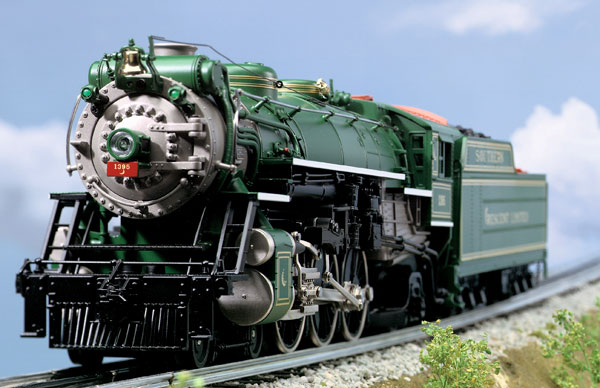

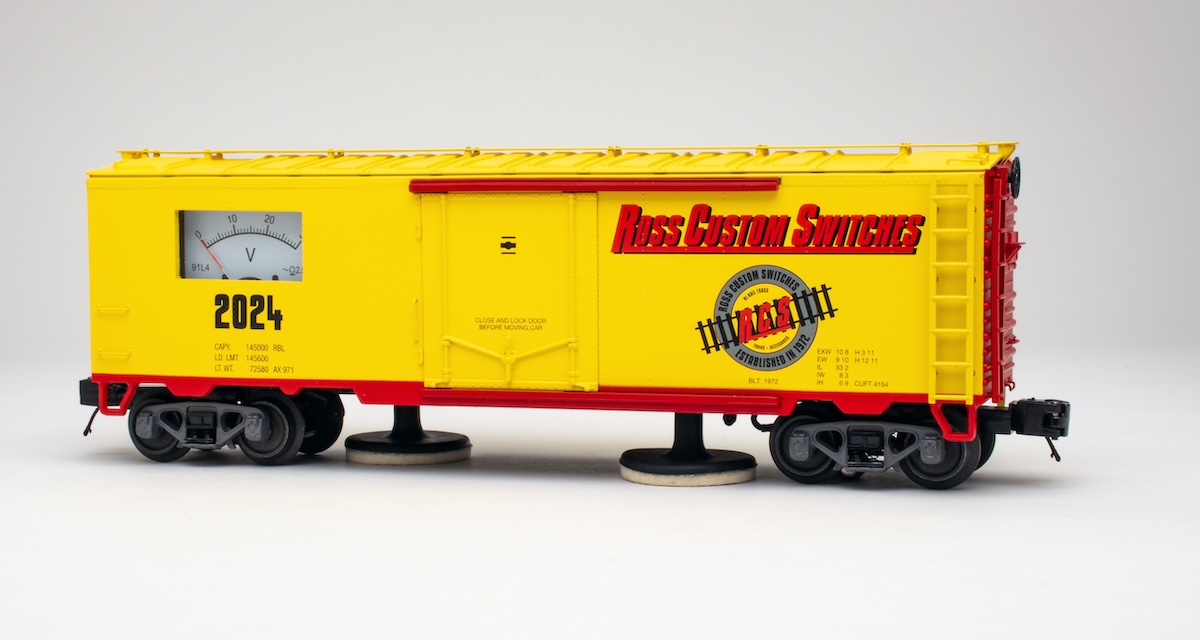
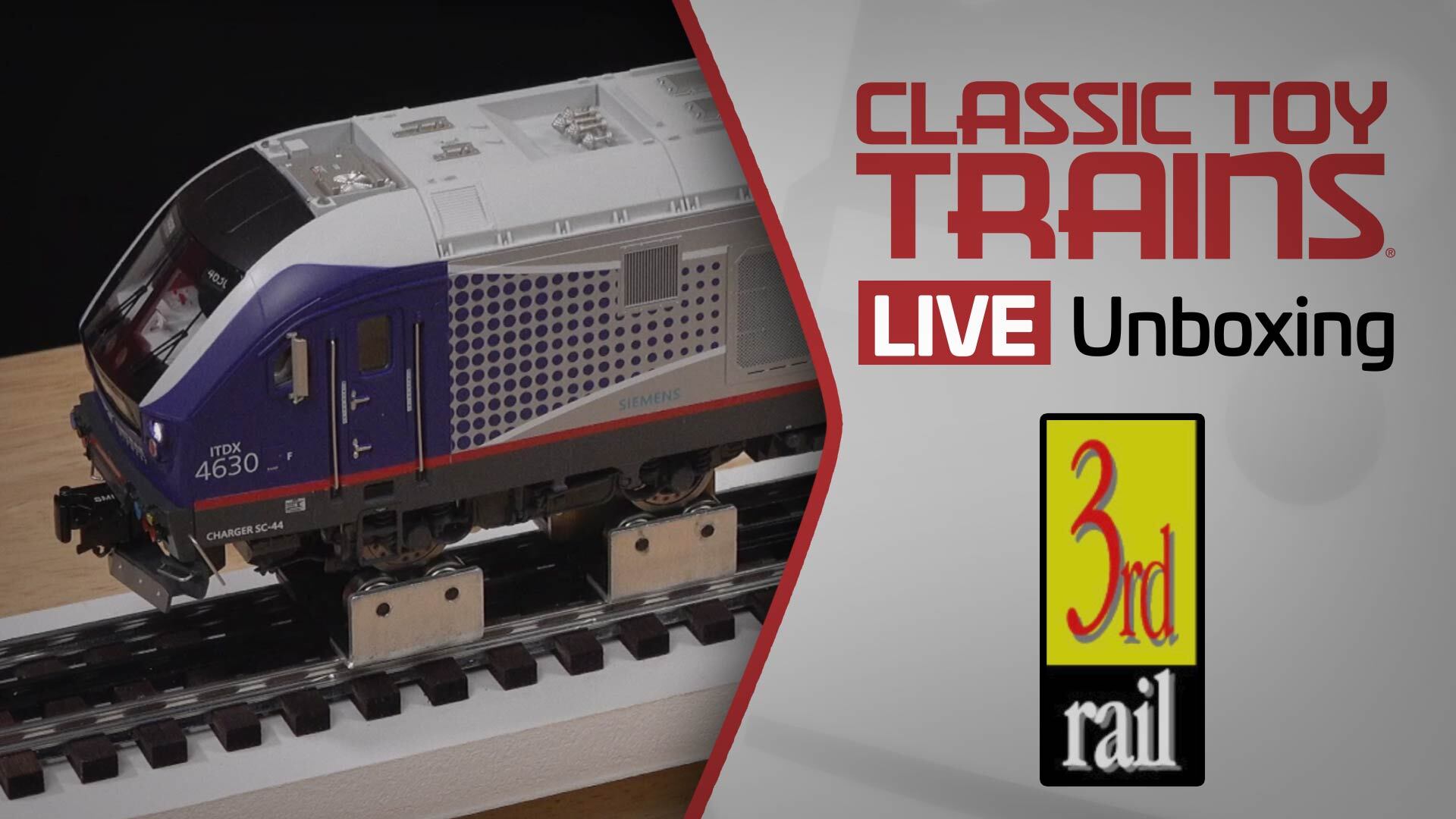
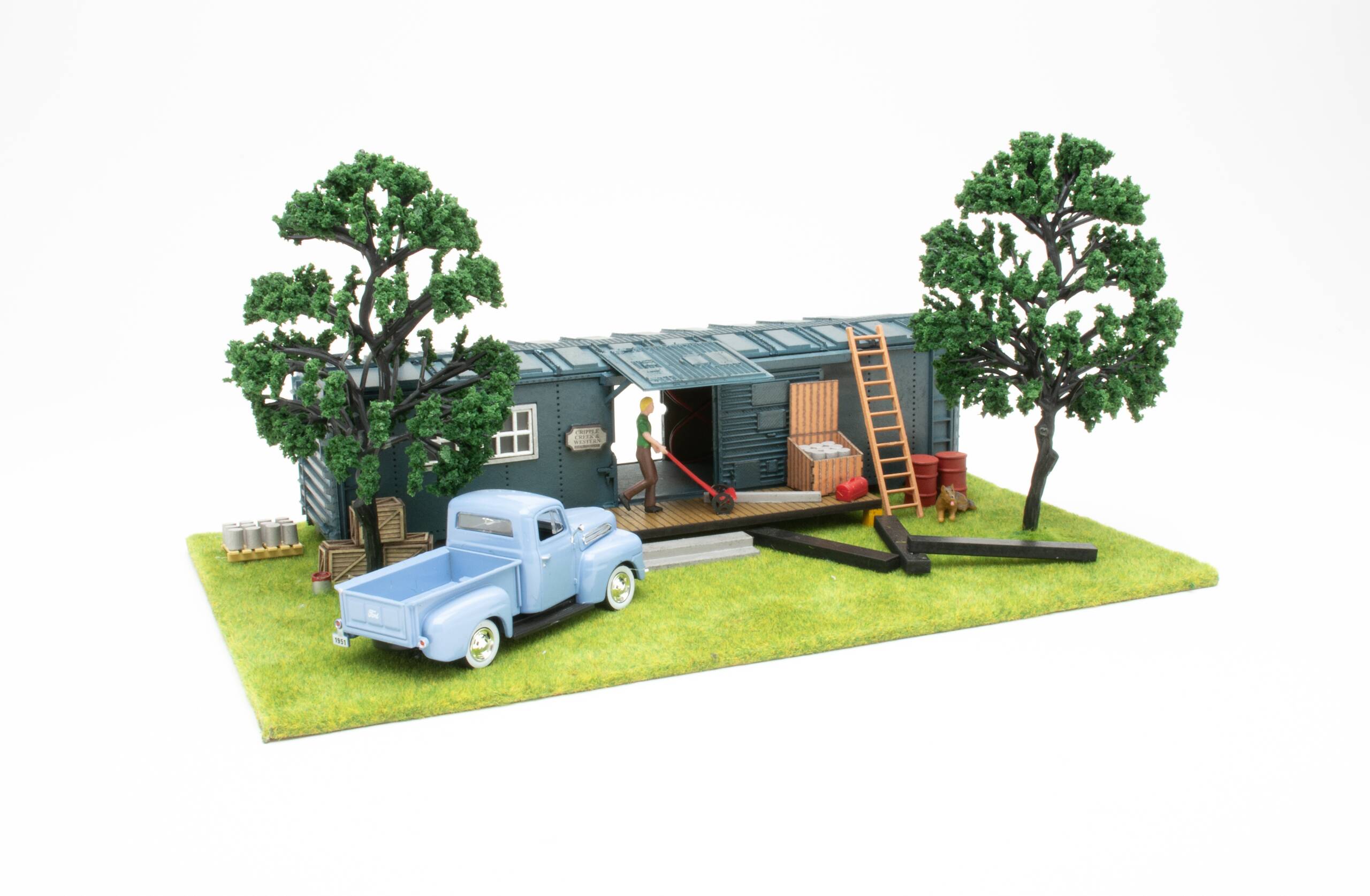
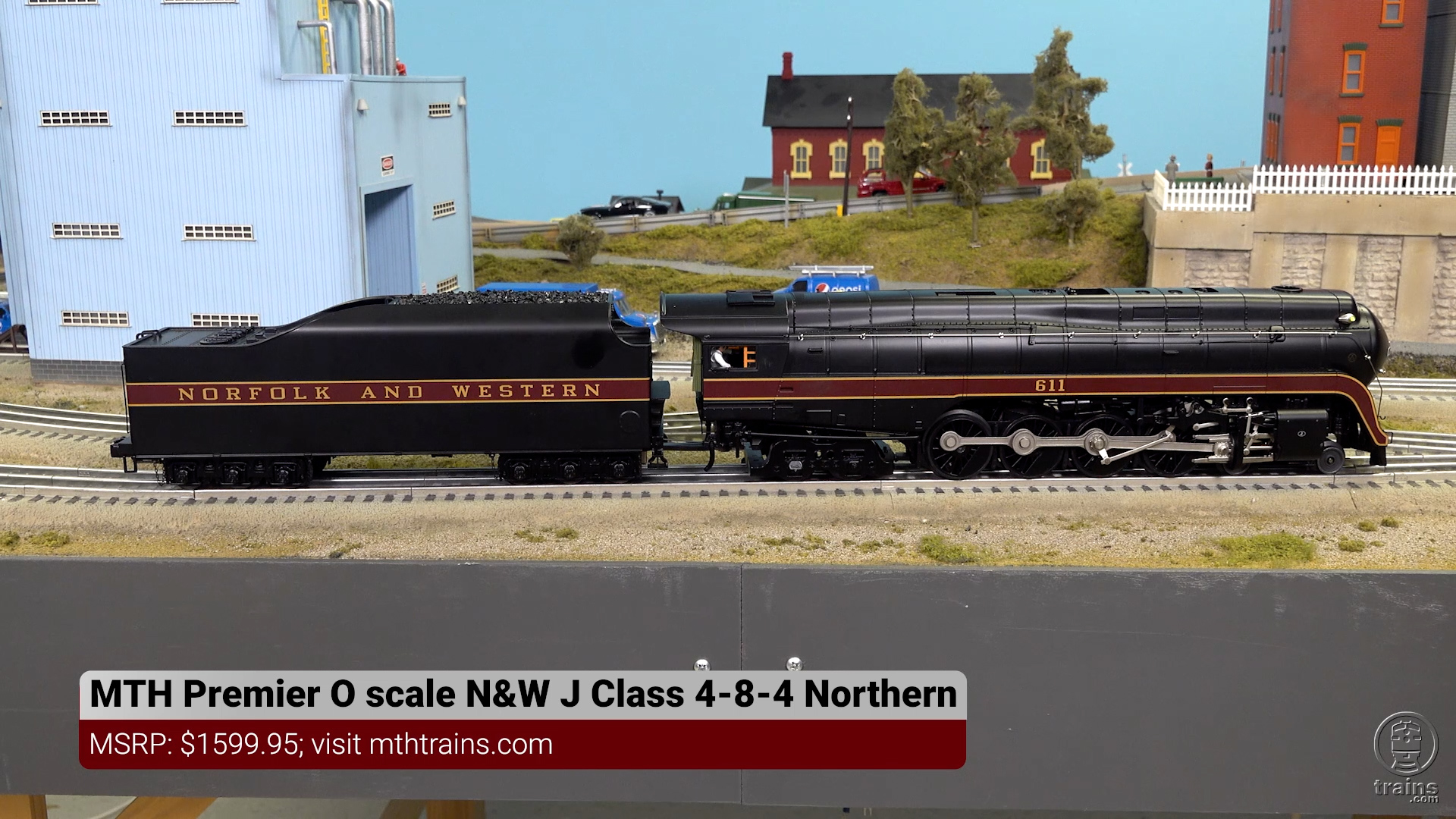




I recently purchased this engine and as Bob says, this baby is beautiful! What impressed my most was the sound. MTH really got it right with the distinct staccato chuff of this Ps-4. The wjhistle is also a distinct feature along with the quilling effect.The engines details are superb including the caps roof vent and the grating on the hinged step over plate from the engine to the tender. I really like the paint treatment. The green and gold look great. A unique feature of not using a battery but charging a capacitor is a great feature, but admittedly, takes a while to get used to. Only problem I encountered was the wireless tether. I found it difficult to connect and the engine sometimes stopped and required reseating to restore operation. But nothing looks better than watching the big drivers and bright running gear as it passes by with a string of Pullman passenger cars. I think it’s the best looking passenger set of all.